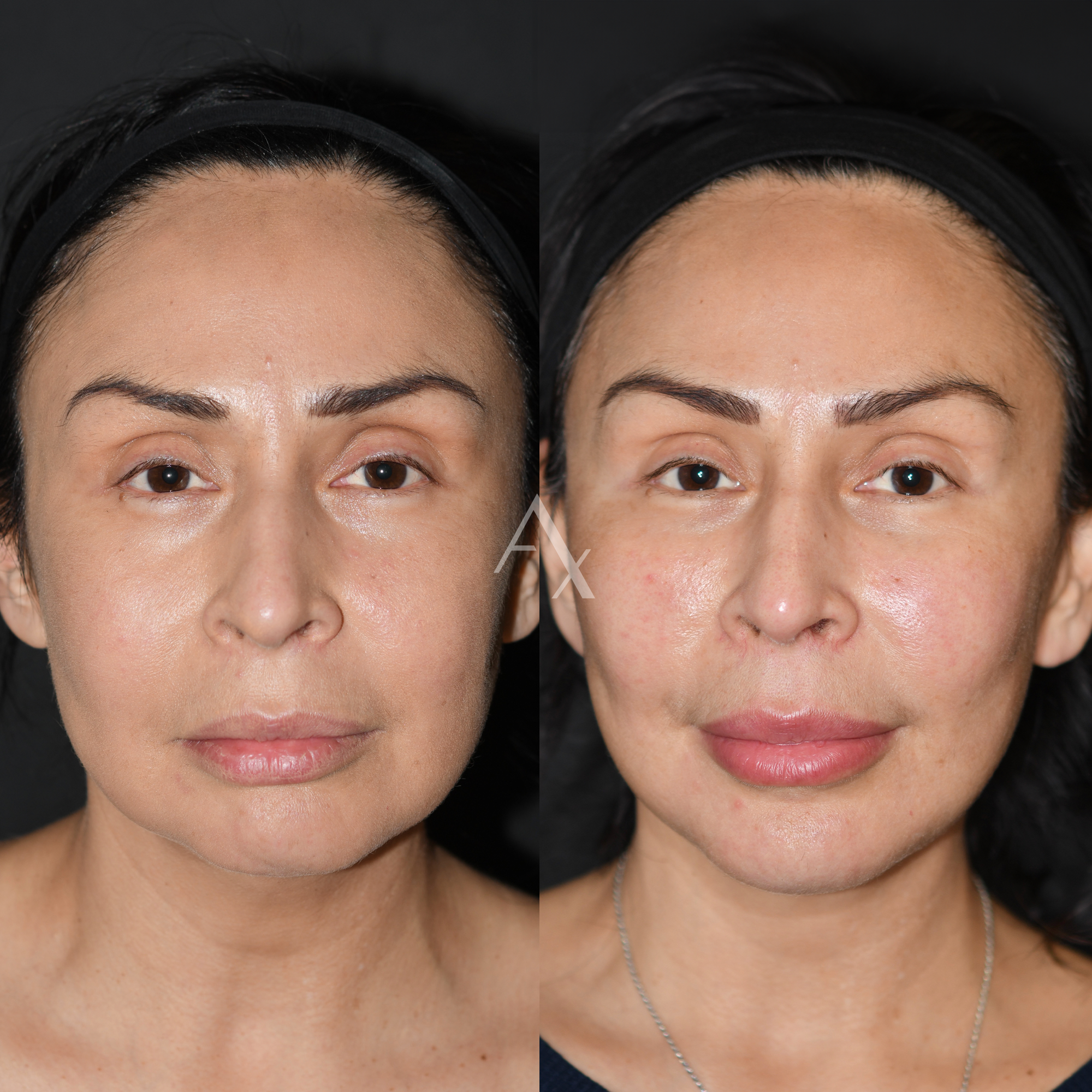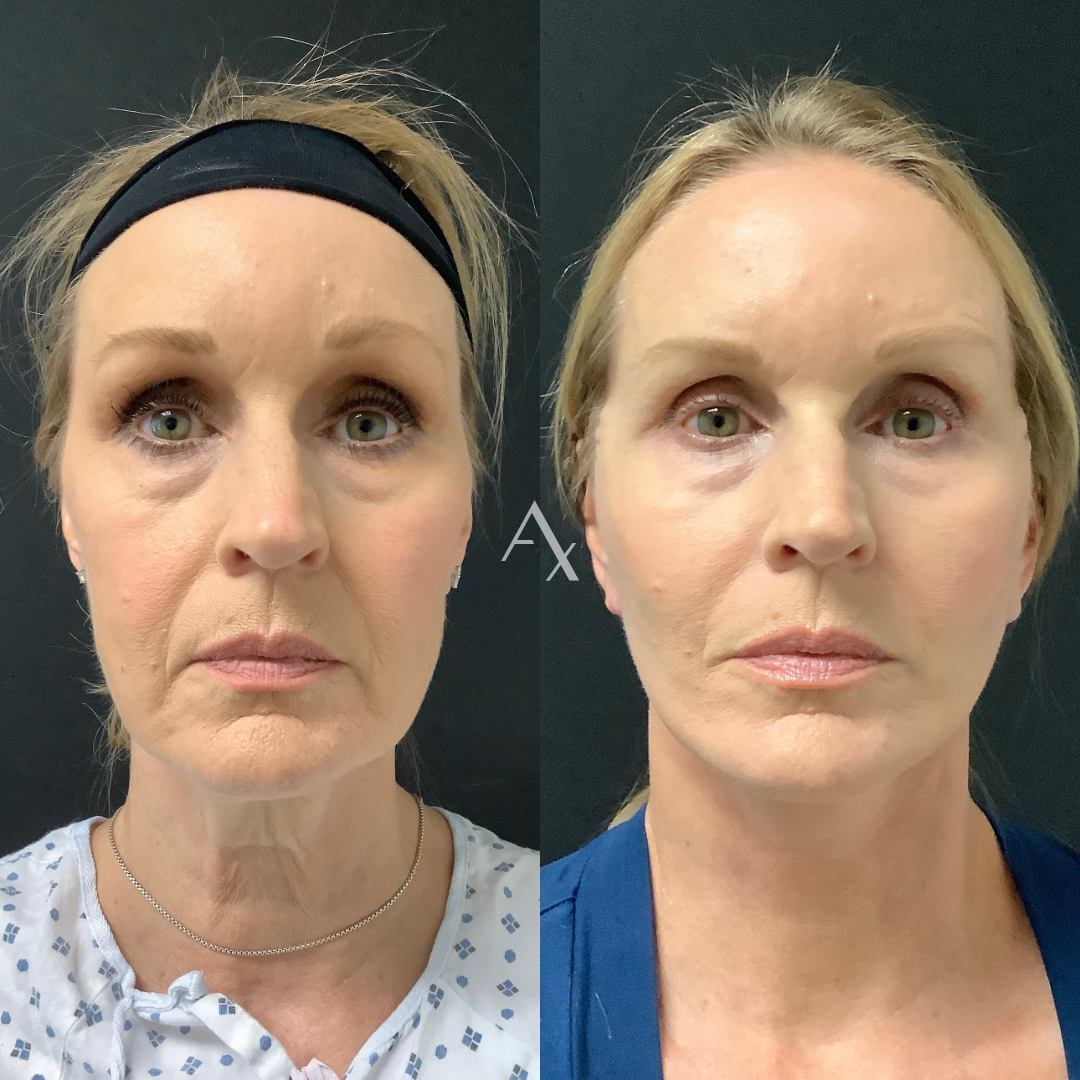Contact Us Today Schedule a Consultation
Unsure where to begin? Our experts can guide you.
Book Now
Considering a facelift? Learn who makes a good candidate, what to expect during surgery, and more. Get expert insights from board-certified professionals.
Reviewed by: Dr. Zeidler
A facelift, also known as a rhytidectomy, is one of the most popular cosmetic surgical procedures aimed at reversing signs of aging and restoring a more youthful, refreshed appearance. As we age, our skin loses elasticity, leading to sagging, wrinkles, and the development of jowls, deep nasolabial folds, and neck bands. A facelift targets these concerns by lifting and tightening the skin and underlying tissues of the face, resulting in a smoother, more youthful look.
Here’s an in-depth look into this transformative surgery, offering you a clear understanding of when it might be right for you and what the recovery process entails.
The decision to undergo a facelift depends on several factors, including your age, skin condition, and the aesthetic changes you're hoping to achieve. A good candidate for a facelift is someone who:
Like any surgical procedure, a facelift carries some risks. Your overall health, including skin health, plays a key role in ensuring a successful outcome.
Facelifts are designed for individuals who show significant signs of aging such as:
Procedures often included with a facelift can target other aging changes, such as
A facelift won’t stop the aging process, but it can dramatically improve your appearance and create a more youthful and refreshed appearance. That said, it’s important to have a clear understanding of what a facelift can and cannot do.
Smoking impairs the healing process and will increase the risk of complications. For this reason, patients are required to quit smoking several weeks before and after surgery.
While facelifts are often associated with older individuals, there is no set age for the surgery. Younger patients who have thin, delicate skin may notice jowl formation earlier than average. Patients who have lost considerable amounts of weight often develop sagging facial and neck skin.
Facelift surgery can be effective for anyone, regardless of age, who shows noticeable signs of aging. People age at varying rates and older patients are good candidates as long as their health is stable and they have realistic expectations.

Rhytidectomy isn’t a one-size-fits-all procedure. Different techniques are designed to target specific areas of aging, ensuring natural-looking results based on your needs. Here are the most common types of facelifts:
This comprehensive approach addresses moderate to severe sagging in the midface, jawline, and neck. The surgeon lifts and repositions deeper facial tissues while removing excess skin, creating a smoother, more youthful appearance. Ideal for patients experiencing significant volume loss and skin laxity.
Sometimes called a "weekend facelift," this technique is less invasive and focuses on mild sagging in the lower face and jawline. With smaller incisions and shorter recovery time, it’s great for younger patients or those seeking subtle rejuvenation.
This technique targets the area around the cheeks and under the eyes, lifting sagging tissues to restore volume and contour. Unlike a full facelift, it does not address the jawline or neck, making it ideal for patients primarily concerned with cheek deflation.
A more advanced technique that repositions deeper facial structures, including muscles and fat pads, rather than just tightening the skin. This results in a longer-lasting, natural appearance with minimal tension on the skin, reducing the risk of a "pulled" look.
Though technically a separate procedure, a neck lift is often combined with a facelift to address loose skin, banding, and excess fat in the neck area, refining the jawline for a smoother, more defined profile.
Each facelift technique is tailored to the individual, ensuring results that look natural and harmonious.
A full facelift is a complex procedure that involves careful planning and execution. Let’s focus on key steps that will ensure the best results.
Your facelift journey begins with a thorough consultation with your surgeon: During this consultation, the surgeon will assess your facial structure and skin quality, and will address your areas of concern. The more specific you are about the changes you wish to address, the better your surgeon can suggest and provide solutions.
It is important to express your goals and expectations for the procedure. Photos will be taken and a discussion of surgical options, including ancillary procedures, will take place. There is much confusion about the different kinds of facelifts that one can read about on social media.
Different surgeons may mean different things when they label their facelift procedure. It is more important to understand exactly what the procedure will address and how that will be accomplished than to focus on what the facelift is called.
Most surgeons perform facelifts under general anesthesia, meaning that you will be asleep during the procedure. Trust that your surgeon will recommend what allows him or her to achieve the best results. Although many people are anxious about general anesthesia, the availability of short-acting effective medications has done much to improve the anesthesia experience. Surgical Incisions
The surgeon will make incisions around the hairline, behind the ears, and sometimes under the chin. These incisions are strategically placed to minimize scarring and are usually hidden in natural skin folds. Incisions that follow the contours in front of the ears allow for the smooth correction of facial sagging and incisions that are behind the ear allow for smooth redraping of the neck skin. The goal of a facelift is to lift and reposition the skin and soft tissues of the face and neck to restore youthful contours.
After making the incisions, the surgeon elevates the skin and lifts and repositions the deeper layers of the face and neck.
Any of these procedures may include redistribution of facial fat and removal of excess skin. The neck portion of the surgery also addresses excess skin and fat and often includes tightening of the underlying muscle (platysma). Fat grafting or buccal fat removal are contouring techniques that may be used to add or remove volume in areas such as the cheeks and the nasolabial folds.
Once the underlying structures of the face and neck are contoured and repositioned, the excess skin is removed and incisions are carefully closed with sutures. A drain may be placed temporarily to help remove excess fluid that could accumulate during the healing process.

The recovery process after a facelift is crucial to minimize potential complications and ensure that the results are long-lasting. Here's what to expect after your surgery:
After surgery, your hair will be shampooed and conditioned and a head dressing will be fashioned that applies gentle compression over your neck and the sides of your face. You’ll spend time in the recovery room under the care of the medical team before being sent home. You may experience swelling, bruising, and some discomfort, which can be managed with prescribed medications. The head dressing and drain(s) will be removed within the first several days following your surgery and you will be able to take a lukewarm shower and shampoo your hair by post-operative day 5.
Most patients can return to light activities after about 2 weeks, though it’s best to avoid strenuous exercise and activities that might cause your face to flush. Bruising and swelling may take a few weeks to subside, but visible improvements will be noticeable as soon as the head dressing is removed.
Complete recovery typically takes 3 to 6 months, during which time any residual swelling will continue to diminish. The final results of the facelift become more evident after several months as scars mature and inflammation subsides.
While scars from the incisions are permanent, they usually fade significantly over time and are well-hidden in the natural folds of the skin. Scars may take a year or more to fully mature, but care is taken to make them as imperceptible as possible.
The secret to minimal scarring is tension-free closure of the incisions and protection from the sun. Maintaining a healthy diet and lifestyle will help you heal in the best way possible. Your doctor may recommend nutritional supplements and scar creams that promote healing and minimize scarring. If you have been a smoker, this is a good time to consider quitting since you will need to avoid smoking for 6 more weeks after your procedure.
A facelift delivers long-lasting rejuvenation. A patient who undergoes a facelift will always maintain a more youthful appearance than if they had not had the procedure. However, since aging continues, some changes in skin elasticity and facial volume will gradually appear over time. Many patients return for secondary surgery or ancillary procedures within 7 to 10 years following their initial facelift procedure.
Several factors influence how long your facelift results will last:
Procedures that are often recommended in conjunction with or during the years after facelift surgery include:
If you’re considering a facelift, it’s important to consult with a board-certified plastic surgeon who specializes in facial aesthetic procedures. They will help guide you through the decision-making process and determine which facelift procedure is the best option for you.
Whether you're looking to address sagging skin or other age-related changes, a facelift can significantly rejuvenate your appearance and help you feel more confident in your skin. With realistic expectations and careful planning, you can enjoy long-lasting, natural-looking results.
A facelift can offer incredible rejuvenation, but it’s essential to approach the procedure with thoughtful consideration and guidance from a trusted surgeon. Surgeons often have a particular style. Communicate your concerns to your surgeon and take time to understand his or her aesthetic inclinations in order to avoid an “overdone” look.
Think twice if you don’t feel comfortable asking your surgeon questions about the procedures. By understanding the process, potential benefits, and recovery timeline, you can make an informed decision about whether this transformative procedure is right for you. Contact Aesthetx and get all your doubts cleared.

